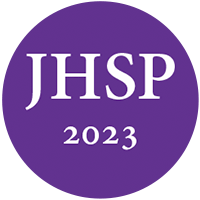The professional home for health service psychologists.
Join a community of 15,000 psychologists and trainees.
Learn it today. Apply it tomorrow.
Connecting you to what you need in your career.
Making a difference.
Thilges, S., Bolton, C., & Mumby, P. (2018). Pretransplant psychological assessment for stem cell treatment. Journal of Health Service Psychology, 44, 117–124.
Hematopoietic stem cell transplant (HSCT) is a complex medical procedure with multiple psychosocial implications that both influence and are influenced by the medical course. Most transplant centers require that patients complete a pre-HSCT psychological evaluation assessing risk factors that may affect a patient’s ability to tolerate or adhere to the transplant process. A universal assessment methodology, however, is lacking. This article seeks to identify what topics and behaviors may be considered most imperative to assess with patients prior to HSCT. These nine areas include medical diagnosis and history, health literacy, communication with providers, adherence, prior psychiatric history, substance use, coping style, social support, and quality of life. The rationale for identifying these specific assessment points, as well as the implications of unaddressed or untreated areas of concerns, are elucidated.
Registrants can read the full article on CE.NationalRegister.org.
Andorsky, D. J., Loberiza Jr, F. R., & Lee, S. J. (2006). Pre-transplantation physical and mental functioning is strongly associated with self-reported recovery from stem cell transplantation. Bone marrow transplantation, 37(9), 889.
Andrykowski, M. A., Brady, M. J., & Henslee-Downey, P. J. (1994). Psychosocial factors predictive of survival after allogeneic bone marrow transplantation for leukemia. Psychosomatic Medicine, 56(5), 432-439.
Armenian, S. H., Sun, C. L., Francisco, L., Baker, K. S., Weisdorf, D. J., Forman, S. J., & Bhatia, S. (2012). Health behaviors and cancer screening practices in long-term survivors of hematopoietic cell transplantation (HCT): a report from the BMT Survivor Study. Bone marrow transplantation, 47(2), 283.
Arora, M., Pidala, J., Cutler, C., Chai, X., Kurland, B., … Schultz, K. (2013). Impact of prior acute GVHD on chronic GVHD outcomes: a chronic graft versus host disease consortium study. Leukemia, 27(5). 1196-1201.
Barkley, G., Spencer, H. E., Rexrode, D. O., Beitinjaneh, A., Volodin, L., Petroni, G., & Kindwall-Keller, T. L. (2014). Retrospective Assessment of the Stanford Integrated Psychosocial Assessment for Transplantation (SIPAT) in Hemotopoietic Stem Cell Transplantation (HCT) Recipients. Biology of Blood and Marrow Transplantation, 20(2), S147.
Bishop, M. M., Rodrigue, J. R., & Wingard, J. R. (2002). Mismanaging the gift of life: noncompliance in the context of adult stem cell transplantation. Bone marrow transplantation, 29(11), 875.
Champlin, R. (2003). Selection of Autologous or Allogeneic Transplantation. Holland-Frei Cancer Medicine. 6th Edition. Retrieved from https://www.ncbi.nlm.nih.gov/books/NBK12844/
Cohen, M. Z., Jenkins, D., Holston, E. C., & Carlson, E. D. (2013, September). Understanding health literacy in patients receiving hematopoietic stem cell transplantation. In Oncol Nurs Forum (Vol. 40, No. 5, pp. 508-515).
Costanzo, E. S., Juckett, M. B., & Coe, C. L. (2013). Biobehavioral influences on recovery following hematopoietic stem cell transplantation. Brain, Behavior, and Immunity, 30, Supplement, S68–S74. https://doi.org/10.1016/j.bbi.2012.07.005
D’Souza A, Fretham C. Current Uses and Outcomes of Hematopoietic Cell Transplantation (HCT): CIBMTR Summary Slides, 2017. Available at: http://www.cibmtr.org
DiMatteo, R. (2004). Social support and patient adherence to medical treatment: a meta-analysis. Health Psychology, 23(2), 207-218.
DiMatteo, R., Lepper, H., & Croghan, T. (2000). Depression is a risk factor for noncompliance with medical treatment: meta-analysis of the effects of anxiety and depression on patient adherence. Archives of Internal Medicine, 160(14), 2101-2107.
DuHamel KN, Smith MY, Vickberg SMJ, et al. Trauma symptoms in bone marrow transplant survivors: the role of nonmedical life events. J Trauma Stress. 2001;14:95–113.
Ehlers, S., Gastineau, D., Patten, C., Decker, P., Raush, S., … Porrata, L. (2011). The impact of smoking on outcomes among patients undergoing hematopoietic SCT for the treatment of acute leukemia. Bone Marrow Transplant, 46, 285-290.
Ehrlich, K. B., Miller, G. E., Scheide, T., Baveja, S., Weiland, R., Galvin, J., … Penedo, F. J. (2016). Pre-transplant emotional support is associated with longer survival after allogeneic hematopoietic stem cell transplantation. Bone Marrow Transplantation, 51(12), 1594–1598. https://doi.org/10.1038/bmt.2016.191
Fick, D., Agostini, J., & Inouye, S. (2002). Delirium superimposed on dementia: A systematic review. Journal of the American Geriatrics Society, 50(10), 1723-1732. doi:10.1046/j.1532-5415.2002.50468.x
Fife, B. L., Huster, G. A., Cornetta, K. G., Kennedy, V. N., Akard, L. P., & Broun, E. R. (2000). Longitudinal study of adaptation to the stress of bone marrow transplantation. Journal of clinical oncology, 18(7), 1539-1549.
Foster, L. W., McLellan, L. J., Rybicki, L. A., Dabney, J., Welsh, E., & Bolwell, B. J. (2006). Allogeneic BMT and patient eligibility based on psychosocial criteria: a survey of BMT professionals. Bone Marrow Transplantation, 37(2), 223–228. https://doi.org/10.1038/sj.bmt.1705219
Foster, L. W., McLellan, L. J., Rybicki, L. A., Sassano, D. A., Hsu, A., & Bolwell, B. J. (2005). Survival of patients who have undergone allogeneic bone marrow transplantation: The relative importance of in-hospital lay care-partner support. Journal of Psychosocial Oncology, 22(2), 1-20.
Foster, L. W., McLellan, L., Rybicki, L., Dabney, J., Visnosky, M., & Bolwell, B. (2009). Utility of the psychosocial assessment of candidates for transplantation (PACT) scale in allogeneic BMT. Bone marrow transplantation, 44(6), 375.
Foster, L., McLellan, L., Rybicki, L. Dabney, J., Visnosky, M., & Bolwell, B. (2009). Utility of the psychosocial assessment of candidate for transplantation (PACT) scale in allogeneic BMT. Bone Marrow Transplantation, 44, 375-380.
Garcia, C., Mumby, P., Thilges, S., & Stiff, P. (2012). Comparison of Early Quality of Life Outcomes in Autologous and Allogeneic Transplant Patients. Bone Marrow Transplantation, 47(12), 1577-1582.
Garcia, S. F., Hahn, E. A., & Jacobs, E. A. (2010). Addressing low literacy and health literacy in clinical oncology practice. The journal of supportive oncology, 8(2), 64.
Gooptu, M.. & Koreth, J. (2017). Better acute graft-versus-host disease outcomes for allogeneic transplant recipients in the modern era: a tacrolimus effect? Haematologica, 102(5). 806-808.
Graf, S. A., Vaughn, J. E., Chauncey, T. R., Storer, B. E., Gopal, A. K., Holmberg, L. A., … Sorror, M. L. (2016). Comorbidities, Alcohol Use Disorder, and Age Predict Outcomes after Autologous Hematopoietic Cell Transplantation for Lymphoma. Biology of Blood and Marrow Transplantation, 22(9), 1582–1587. https://doi.org/10.1016/j.bbmt.2016.06.007
Grulke, N., Larbig, W., Kächele, H., & Bailer, H. (2008). Pre-transplant depression as risk factor for survival of patients undergoing allogeneic haematopoietic stem cell transplantation. Psycho-Oncology, 17(5), 480–487. https://doi.org/10.1002/pon.1261
Hatzimichael, E., & Tuthill, M. (2010). Hematopoietic stem cell transplantation. Stem Cells and Cloning : Advances and Applications, 3, 105–117. https://doi.org/10.2147/SCCAA.S6815
Hoodin, F., & Kalbfleisch, K. R. (2003). Factor analysis and validity of the Transplant Evaluation Rating Scale in a large bone marrow transplant sample. Journal of Psychosomatic Research, 54(5), 465–473. https://doi.org/10.1016/S0022-3999(02)00413-
Hoodin, F., Kalbfleisch, K. R., Thornton, J., & Ratanatharathorn, V. (2004). Psychosocial influences on 305 adults’ survival after bone marrow transplantation: Depression, smoking, and behavioral self-regulation. Journal of Psychosomatic Research, 57(2), 145–154. https://doi.org/10.1016/S0022-3999(03)00599-3
Hoodin, F., Kalbfleisch, K. R., Thornton, J., & Ratanatharathorn, V. (2004). Psychosocial influences on 305 adults’ survival after bone marrow transplantation: Depression, smoking, and behavioral self-regulation. Journal of psychosomatic research, 57(2), 145-154.
Hoodin, F., Uberti, J. P., Lynch, T. J., Steele, P., & Ratanatharathorn, V. (2006). Do negative or positive emotions differentially impact mortality after adult stem cell transplant? Bone Marrow Transplantation, 38(4), 255–264. https://doi.org/10.1038/sj.bmt.1705419
Hurley CL, Mumby PB, Parthasarathy M, Stiff P, A model of psychological morbidity during autologous bone marrow transplantation: The use of optimal data analysis in psychosocial oncology. Journal of Psycho-Oncology 2006; Vol.15(1 suppl).
Husson, O., Mols, F., & Van de Poll-Franse, L. V. (2010). The relation between information provision and health-related quality of life, anxiety and depression among cancer survivors: a systematic review. Annals of Oncology, 22(4), 761-772.
Irwin, M., & Johnson, L. A. (2015). Factors influencing oral adherence: Qualitative metasummary and triangulation with quantitative evidence. Clinical Journal Of Oncology Nursing, 19(3, Suppl), 6-30.
Jacobsen, P. B., Sadler, I. J., Booth-Jones, M., Soety, E., Weitzner, M. A., & Fields, K. K. (2002). Predictors of posttraumatic stress disorder symptomatology following bone marrow transplantation for cancer. Journal of Consulting and Clinical Psychology, 70(1), 235.
Lee, S. J., Loberiza, F. R., Antin, J. H., Kirkpatrick, T., Prokop, L., Alyea, E. P., … & Fisher, D. C. (2005). Routine screening for psychosocial distress following hematopoietic stem cell transplantation. Bone marrow transplantation, 35(1), 77.
Maziarz, R. T. (2015). Overview of Hematopoietic Stem Cell Transplantation. In R. T. Maziarz & S. S. Slater (Eds.), Blood and Marrow Transplant Handbook (pp. 3–9). Springer International Publishing. https://doi.org/10.1007/978-3-319-13832-9_1
McGregor, B. A., Syrjala, K. L., Dolan, E. D., Langer, S. L., & Redman, M. (2013). The effect of pre-transplant distress on immune reconstitution among adult autologous hematopoietic cell transplantation patients. Brain, behavior, and immunity, 30, S142-S148.
Meadows, M., Chang, G., Jones, J., Antin, J., & Orav, E. (2013). Predictors of neuropsychological change in patients with chronic myelogenous leukemia and myelodysplastic syndrome. Archives of Clinical Neuropsychology, 28(4), 363-374. doi:10.1093/arclin/acs141
Mosher, C. E., DuHamel, K. N., Rini, C., Corner, G., Lam, J., & Redd, W. H. (2011). Quality of life concerns and depression among hematopoietic stem cell transplant survivors. Supportive Care in Cancer, 19(9), 1357-1365.
Muffly , L., & Artz, A. (2018). Another reason to encourage psychosocial risk assessment in hematopoietic cell transplantation. Bone Marrow Transplantation.
Mumby, P. B., Doyle, T., Adams, W., Hicks, E. B., Thilges, S., Mai, H. P., … & Stiff, P. J. (2017). Utility of the Stanford Integrated Psychosocial Assessment for Transplantation (SIPAT) in hematopoietic stem cell transplantation (HSCT).
Mumby, P., Hurley, C., Samsi, M., Thilges, S., Parthasarathy, M., & Stiff, P. (2011). Predictors of non-compliance in autologous hematopoietic stem cell transplant patients undergoing out-patient transplants. Bone Marrow Transplantation. 47(4), 556-561.
Olbrisch, M. E., Levenson, J. L., & Hamer, R. (1989). The PACT: a rating scale for the study of clinical decision-making in psychosocial screening of organ transplant candidates. Clinical Transplantation, 3(3), 164-169.
Paika, V., Almyroudi, A., Tomenson, B., Creed, F., Kampletsas, E. O., Siafaka, V., … & Hyphantis, T. (2010). Personality variables are associated with colorectal cancer patients’ quality of life independent of psychological distress and disease severity. Psycho‐oncology, 19(3), 273-282.
Pereira, D. B., Christian, L. M., Patidar, S., Bishop, M. M., Dodd, S. M., Athanason, R., … & Reddy, V. S. (2010). Spiritual absence and 1-year mortality after hematopoietic stem cell transplant. Biology of Blood and Marrow Transplantation, 16(8), 1171-1179.
Presberg, B. A., Levenson, J. L., Olbrisch, M. E., & Best, A. M. (1995). Rating scales for the psychosocial evaluation of organ transplant candidates: Comparison of the PACT and TERS with bone marrow transplant patients. Psychosomatics, 36(5), 458-461.
Richardson, D. R., Huang, Y., McGinty, H. L., Elder, P., Newlin, J., Kirkendall, C., … & Penza, S. (2018). Psychosocial risk predicts high readmission rates for hematopoietic cell transplant recipients. Bone Marrow Transplantation.
Rueda-Lara, M., & Lopez-Patton, M. R. (2014). Psychiatric and psychosocial challenges in patients undergoing haematopoietic stem cell transplants. International Review of Psychiatry, 26(1), 74-86.
Schulz-Kindermann, F., Hennings, U., Ramm, G., Zander, A. R., & Hasenbring, M. (2002). The role of biomedical and psychosocial factors for the prediction of pain and distress in patients undergoing high-dose therapy and BMT/PBSCT. Bone Marrow Transplantation, 29(4), 341.
Speckhart, D. S., & Solomon, S. R. (2006). Psychosocial Factors as Measured by the Transplant Evaluation Rating Scale (TERS) Predict Length of Hospitalization and Transplant Outcomes Following Hematopoietic Stem Cell Transplantation.
Spiegel, D., & Giese-Davis, J. (2003). Depression and cancer: mechanisms and disease progression. Biological psychiatry, 54(3), 269-282.
Syrjala, K. L., Dikmen, S., Langer, S. L., Roth-Roemer, S., & Abrams, J. R. (2004). Neuropsychologic changes from before transplantation to 1 year in patients receiving myeloablative allogeneic hematopoietic cell transplant. Blood, 104(10), 3386–3392. https://doi.org/10.1182/blood-2004-03-1155
Twillman RK, Manetto C, Wellisch DK, Wolcott DL. The Transplant Evaluation Rating Scale: a revision of the Psychosocial Levels System for evaluating organ transplant candidates. Psychosomatics 1993;34: 144 – 53.
Worel, N., Biener, D., Kalhs, P., Mitterbauer, M., Keil, F., Schulenburg, A., … & Linkesch, W. (2002). Long-term outcome and quality of life of patients who are alive and in complete remission more than two years after allogeneic and syngeneic stem cell transplantation. Bone marrow transplantation, 30(9), 619.
Zachariae, R., Pedersen, C. G., Jensen, A. B., Ehrnrooth, E., Rossen, P. B., & von der Maase, H. (2003). Association of perceived physician communication style with patient satisfaction, distress, cancer-related self-efficacy, and perceived control over the disease. British journal of cancer, 88(5), 658.
Zolnierek, K. B. H., & DiMatteo, M. R. (2009). Physician communication and patient adherence to treatment: a meta-analysis. Medical care, 47(8), 826.
Copyright © 2025 All rights reserved. National Register of Health Service Psychologists







